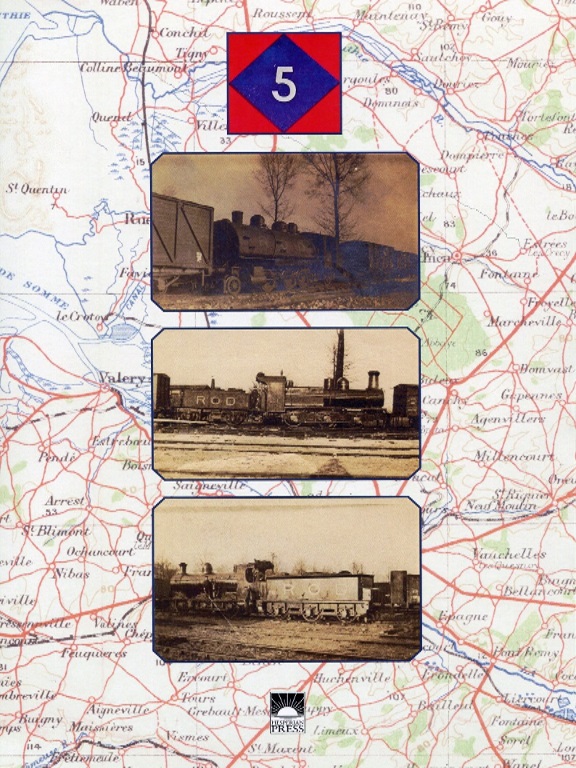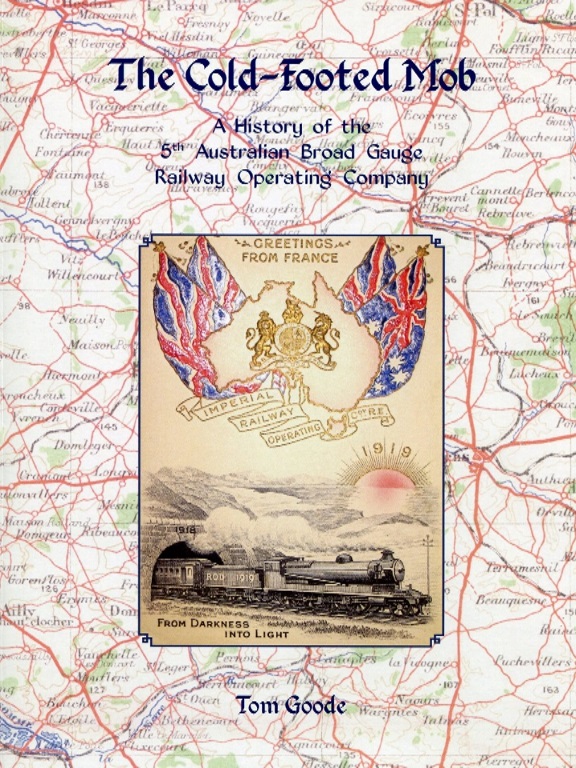The cold footed mob: A history of the 5th Australian Broad Gauge Railway Operating Company
by Tom Goode. Hesperian Press. 94p
You’d be excused for giving this slim A4 tome no more than a passing glance. The title and the antiquated illustration of a train and some Australian and English flags centred on a yellowing map is hardly attention grabbing.
Don’t judge a book by its cover. The cold footed mob is a surprising and interesting story about a little known unit of the AIF and its role in WWI.
How did those engaged in the 1914-18 war on the Western Front plus their armaments and supplies make their way around the battlefields? That seems a trivial thought compared to the many untold stories about the heroics and battles waged in WWI, but the answer is important and it's railways. Without an efficient railway system the business of war could not proceed and without skilled workers, the rail system would not operate efficiently. Hence the emergence of the 5th Australian Broad Gauge Railway Operating Company or SABGROC, raised in Western Australia.
The role of SABGROC on the Western Front has long been overlooked and part of the reason was its unusual name. Perhaps more compelling though was that the Company rarely came to the notice of the Australian Press Correspondents. It was part of the AIF but its chain of command was through the Royal Engineers.
 After recruitment in 1916, this Unit collected at Blackboy Hill and sailed on the Miltiades in January 1917. The send-off from civilian railway employees as the unit entrained to Fremantle was loud, prolonged and enthusiastic. They were nicknamed ‘the cold footed mob’ by other Blackboy Hill recruits because it was reckoned that they thought their job would be a ‘cushy’ one and when they discovered the dangers of real soldiering were said to have got ‘cold feet’. The men of SABGROC accepted the name in the spirit given and used it constantly to refer to themselves.
After recruitment in 1916, this Unit collected at Blackboy Hill and sailed on the Miltiades in January 1917. The send-off from civilian railway employees as the unit entrained to Fremantle was loud, prolonged and enthusiastic. They were nicknamed ‘the cold footed mob’ by other Blackboy Hill recruits because it was reckoned that they thought their job would be a ‘cushy’ one and when they discovered the dangers of real soldiering were said to have got ‘cold feet’. The men of SABGROC accepted the name in the spirit given and used it constantly to refer to themselves.
The main source of information about the Unit has come from its War Diary. The recorders in SABGROC took their role seriously and recorded much of their experiences with an eye to helping other units avoid the same mistakes.
In putting together his research, Tom Goode has given readers the background story of the importance of railways in war, how and when Australia was asked to send a railway unit as well as a description of the men’s journey to the Western Front and their role there. He has included stories from the men’s personnel files and The WA Railway Gazette as well as a list, and in some cases, photos of the unit’s 269 members.
The book includes an alphabetic list of unit members and an index of people and places as well as a general index and bibliography.
If you’re a railway buff and also interested in the Australia’s WWI involvement on the Western Front, you’ll find Tom Goode’s research highly engaging.
A copy is available in the WAGS Library at 48 May St, Bayswater.
A WAGS book review - by Julie Martin


